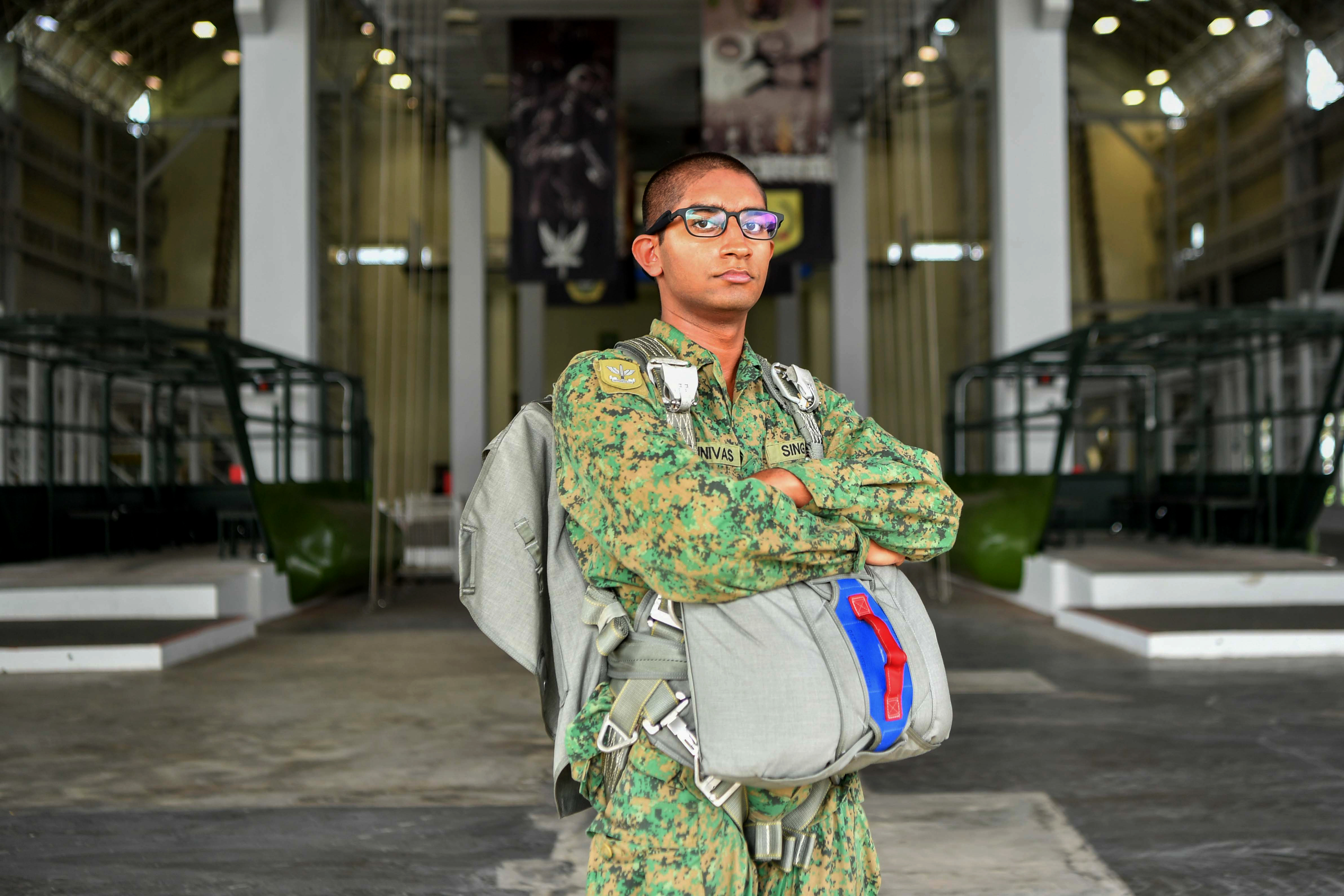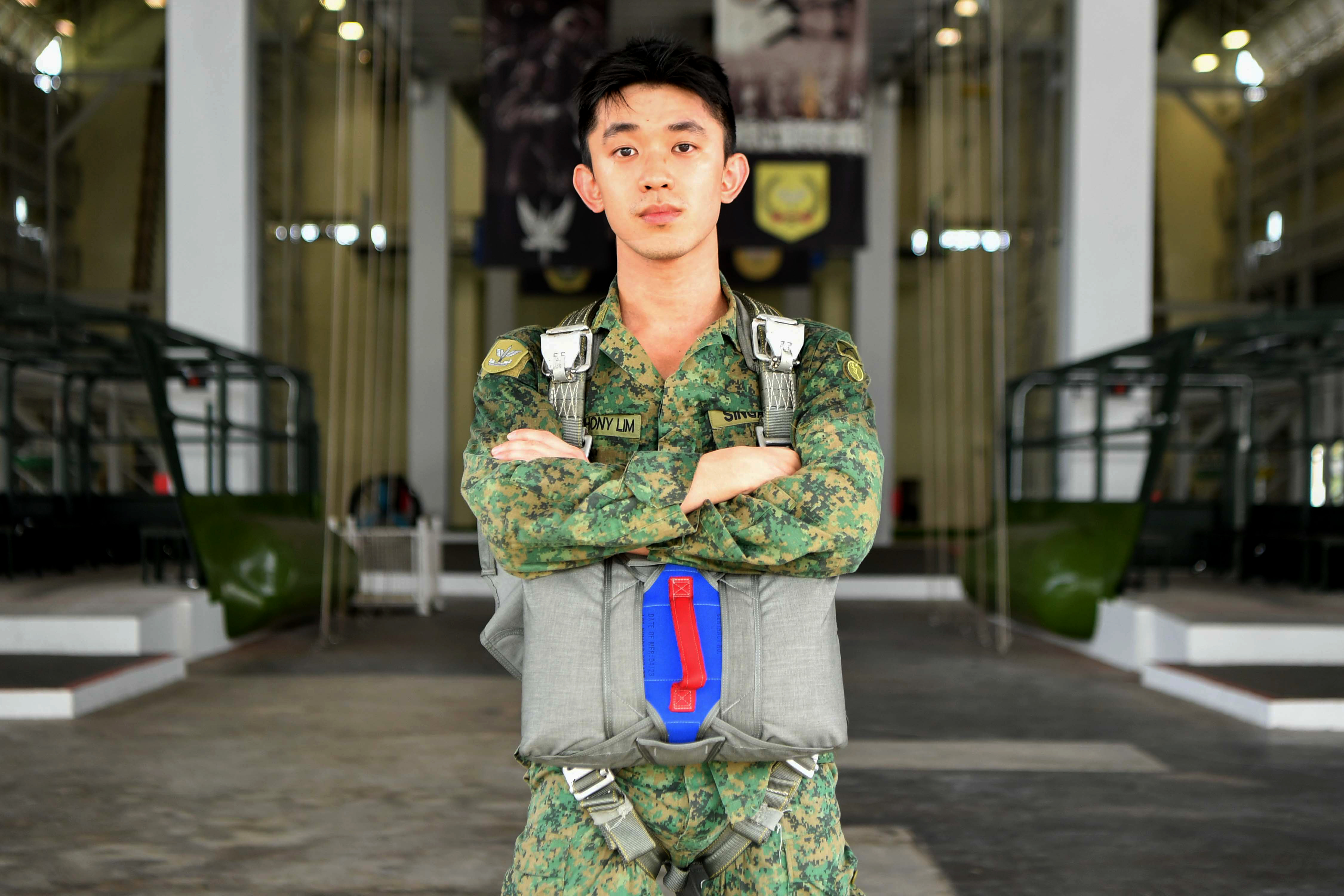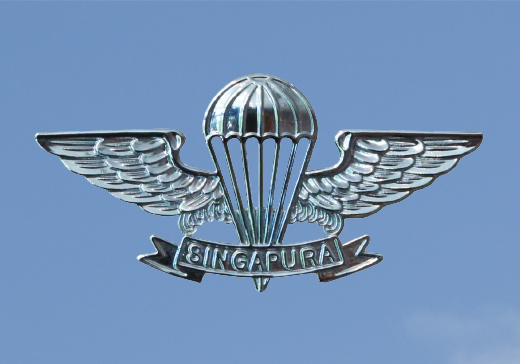OPS & TRAINING
Airborne!
11 Dec 2024
Marking 10 years this December: The Singapore Armed Forces’ (SAF’s) one-of-a-kind training facility prepares trainees to become competent and confident airborne troopers.
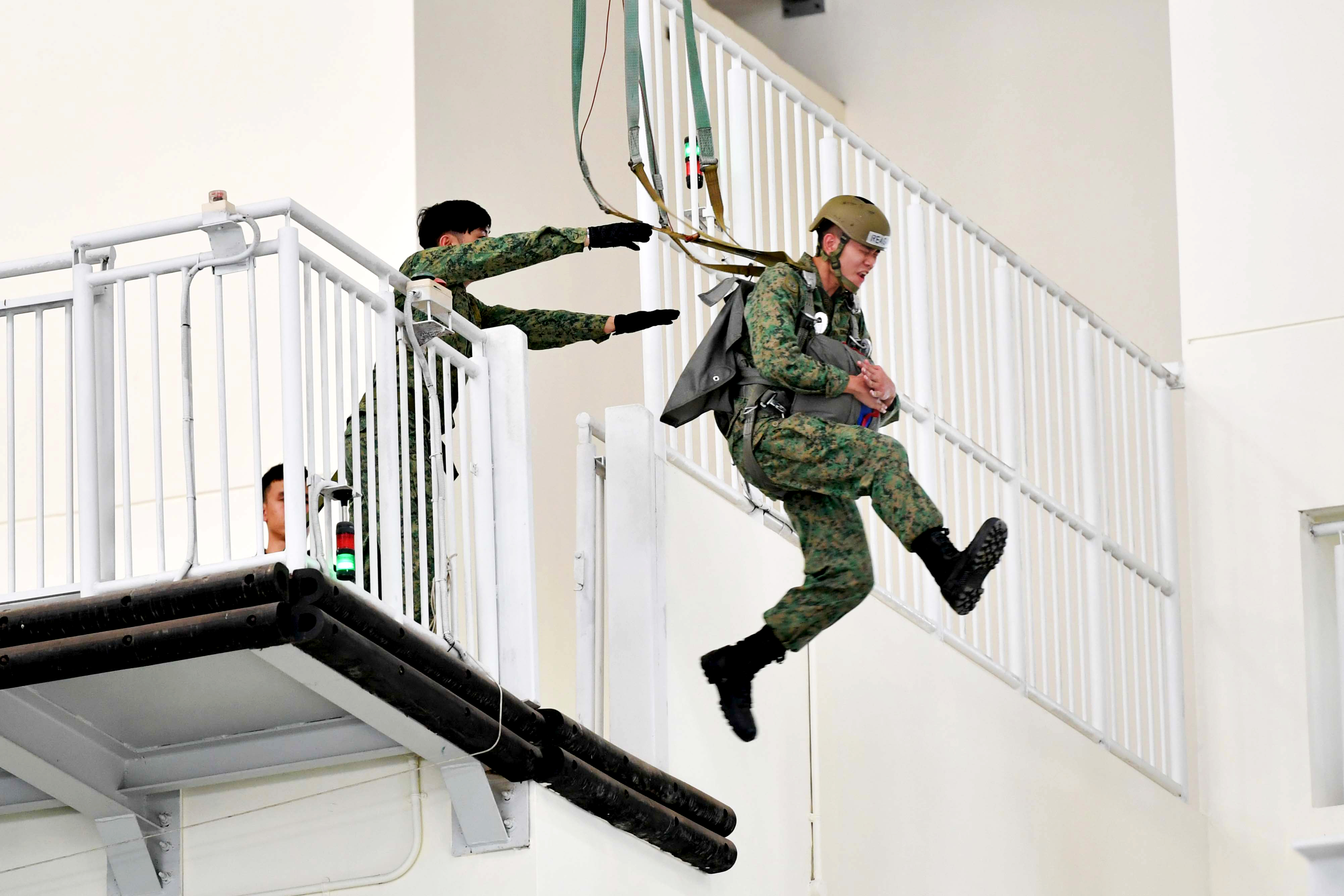
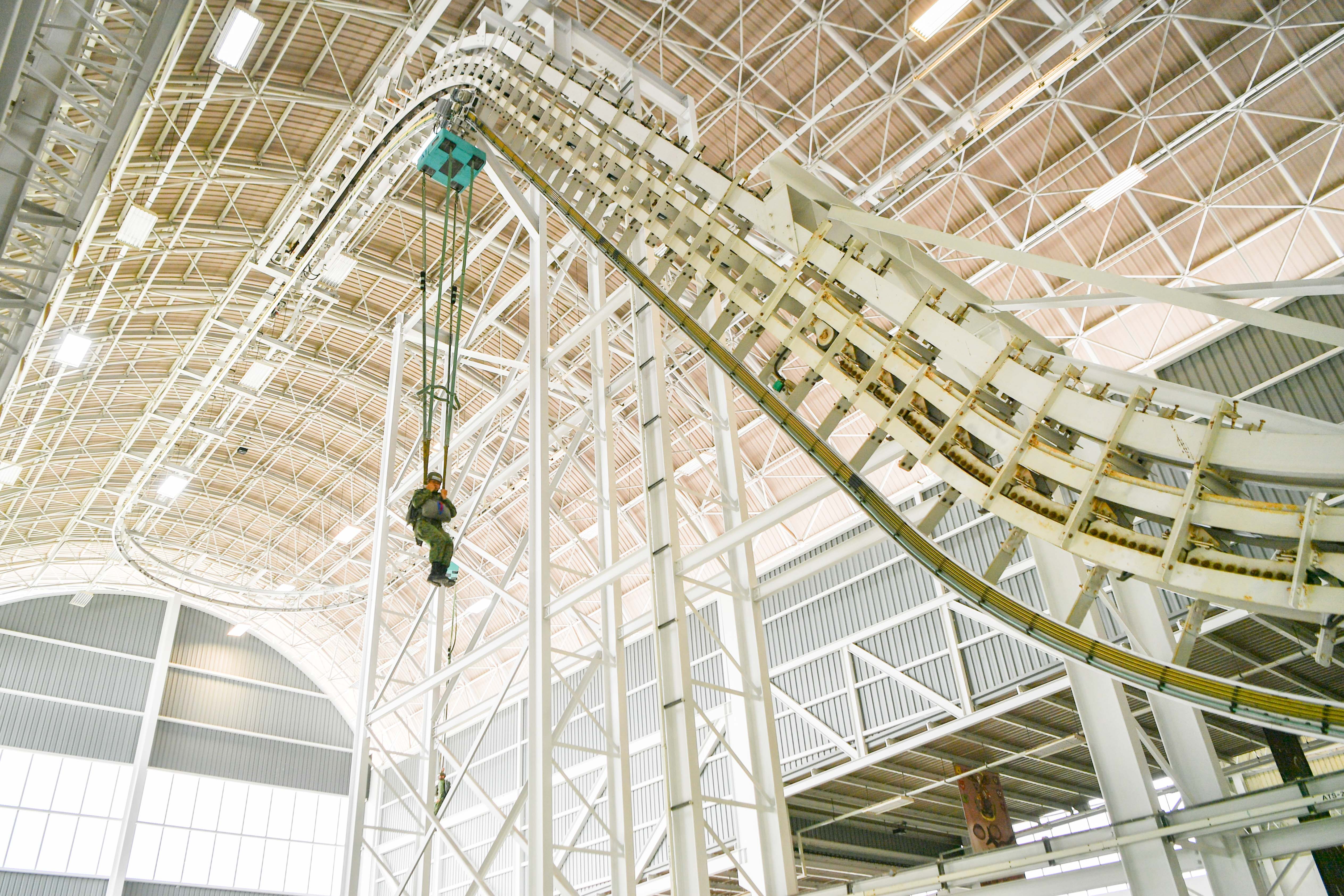
A fear of heights? “Not really, but even if you’re usually not afraid, anyone will be uneasy or scared at the height we’re jumping from,” said Private (PTE) Sibi Srinivas S/O Ganesan.
The 20-year-old Full-time National Serviceman (NSF) was among the latest batch of Commando trainees undergoing the Basic Airborne Course (BAC) at the Airborne-trooper Training Facility (ATF).
Located in Pasir Ris Camp, the ATF consists of two main training facilities – the Parachuting Training Facility (PTF) and the Rappelling Training Facility (RTF) – for soldiers to hone their proficiency in basic airborne, heli-rappelling and heli-fast roping insertion.
Commando trainees typically take on 10 days of ground training at the Parachuting Training Facility, equipping them with the mental readiness and skills required to perform static line jumps out of an aircraft. (A static line jump is one in which the parachute is deployed automatically as the jumper exits the aircraft.)
The BAC culminates in five live descents 1,000ft (305m) above ground, where the trainees put all the drills they have learnt to the ultimate test. Their reward? The highly coveted Basic Parachutist badge, commonly referred to as their “silver wings”.
Getting the basics right
From mustering up the courage to jump out of a plane to maintaining calm and executing the necessary drills while descending at high speeds, it takes grit to successfully complete the BAC.
Each batch of BAC trainees may number in the hundreds. Before undergoing the course, potential candidates are interviewed and cleared by medical doctors to ensure they are mentally and physically prepared for such challenges.
For fresh rookies with zero experience, it may seem daunting to be expected to execute a live jump in just under two weeks of ground training. The training programme, however, is meticulously constructed to build up their confidence in progressive stages.
“There is a sense of pride since not everybody in National Service has the chance to obtain this badge, and I am one of them,” said PTE Reynard Lucas Djuantoro, 20. The NSF commando trainee enlisted in July this year.
The Parachuting Training Facility consists of the Landing Trainer System, Rotational Trainer System, and Airborne Trainer System.
These systems simulate various aspects of a static line jump, allowing trainees to undergo a realistic experience that closely replicates a live parachute descent.
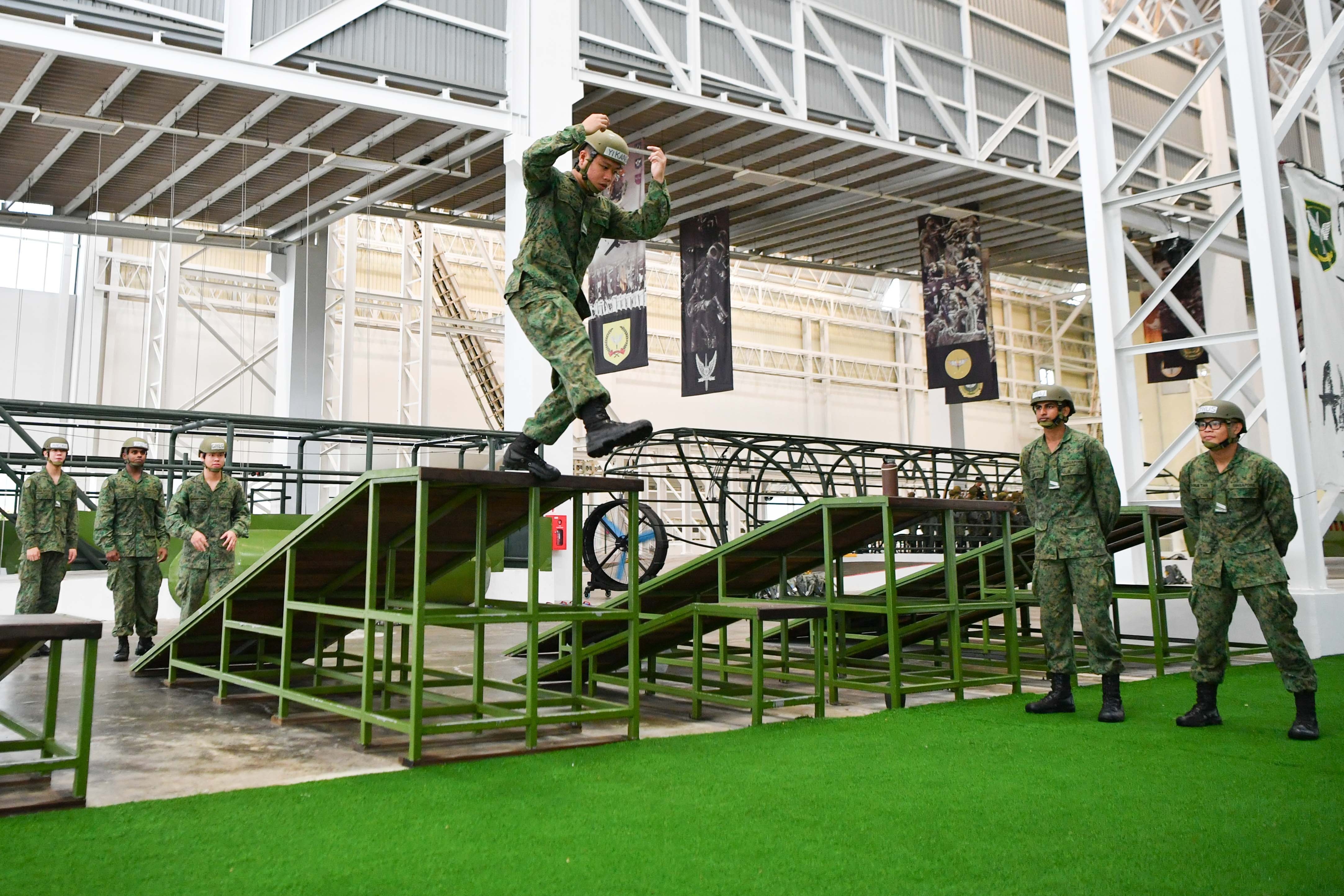
First stop: Landing Trainer System (LTS)
After learning how to put on their parachute, the trainees proceed to learn how to land in a proper manner – a crucial skill to master. This is important in avoiding injuries when descending at high speeds.
First, the trainees will go through 2ft- and 4ft-high platform landings. After many tries and rounds of correcting their mistakes on these platforms, the trainees are now ready to experience what LTS offers.
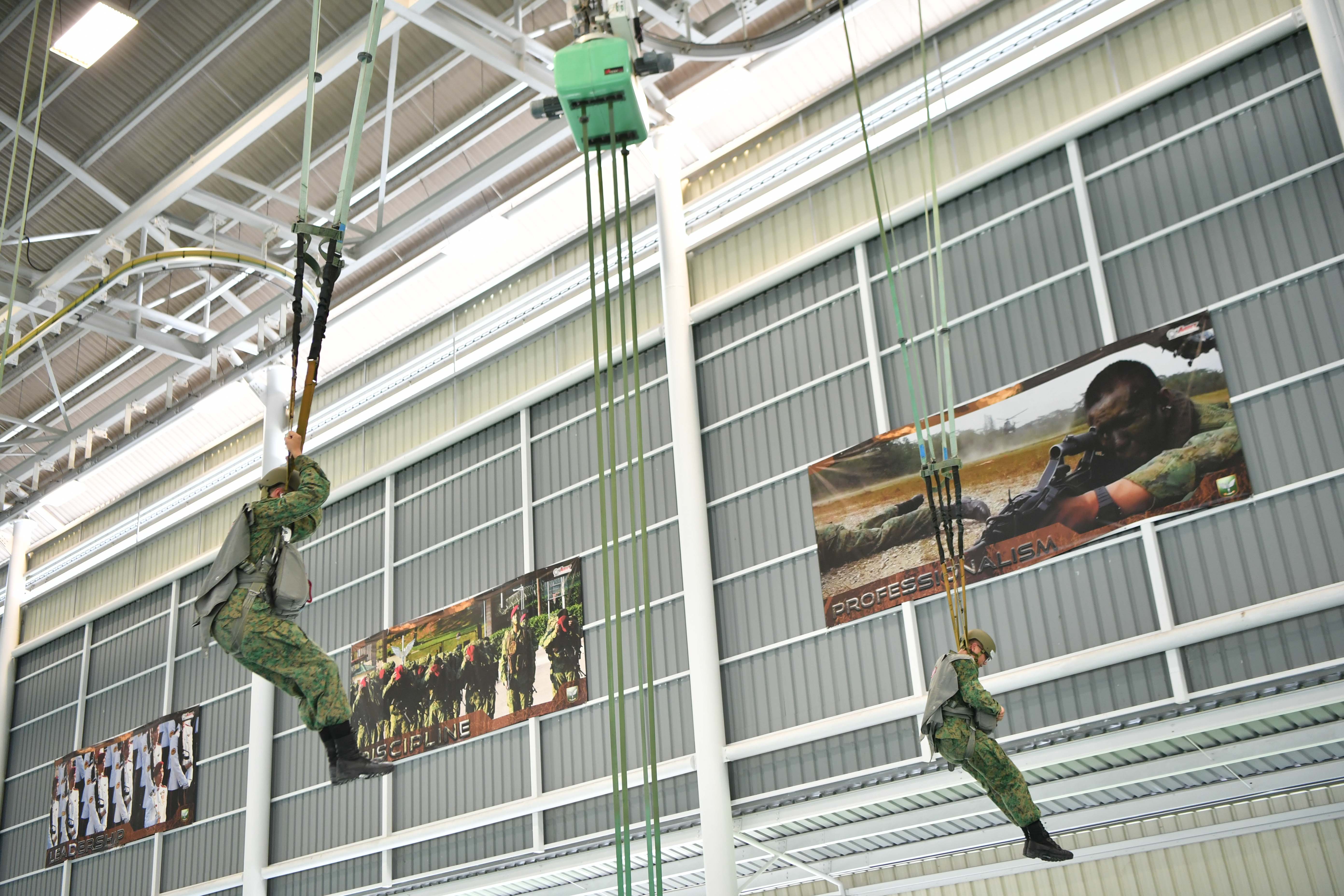

Able to calibrate different heights (4m and 8m) and rates of descent (up to 4m/s), the LTS is where trainees practise progressive height landings.
Once they receive their safety checks by the instructors, they are secured onto the LTS harness and hoisted up in the air. They are then steadily brought forward and lowered down to the ground simultaneously to simulate an actual parachute landing.
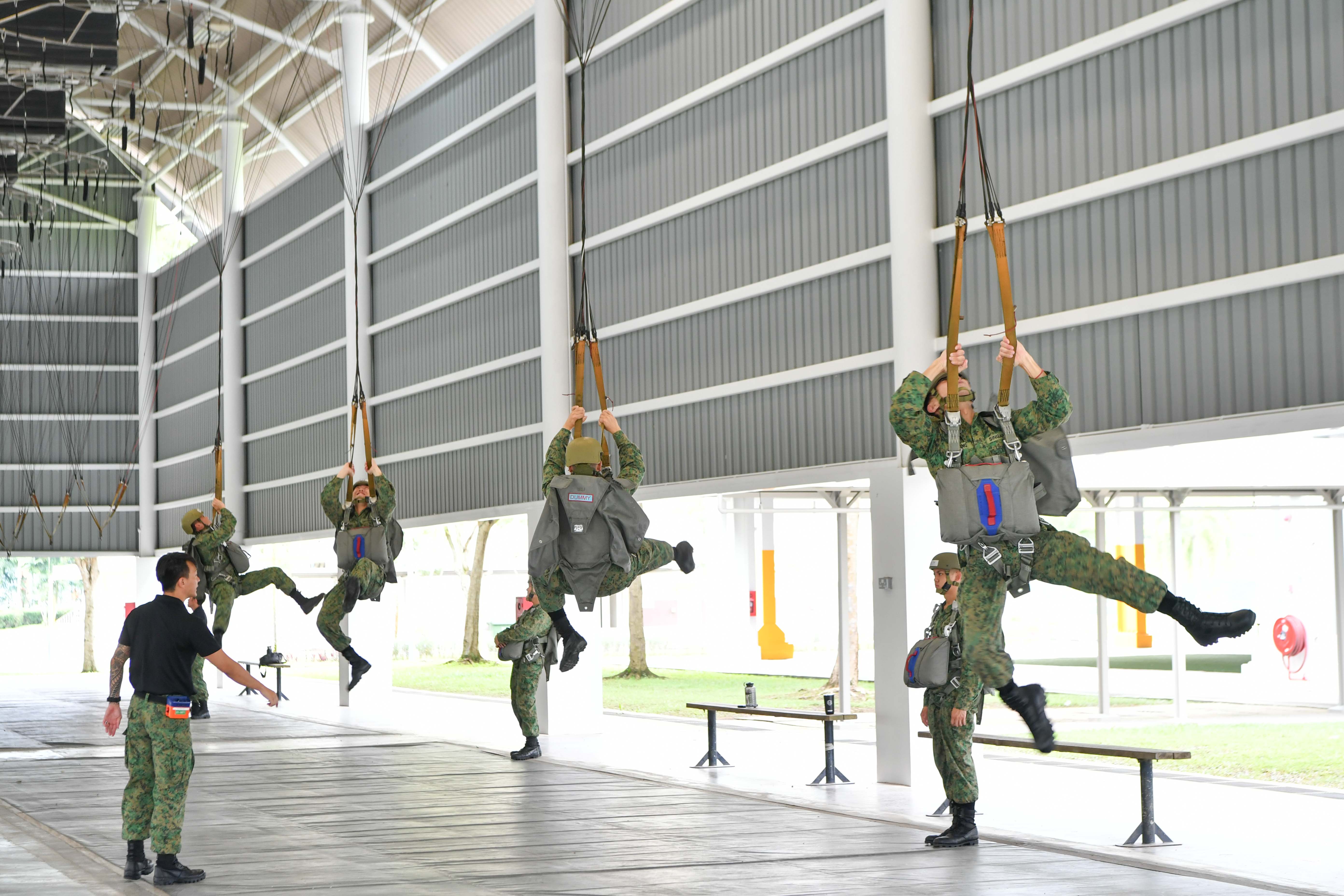
Next stop: Rotational Trainer System (RTS)
Here, trainees practise airborne canopy control, reserve activation procedures, as well as flight and landing emergencies both with and without combat equipment.
The RTS is a fully automated system. For example, parachute canopy lines can be twisted automatically to create a canopy twist scenario for practice. This cuts down on manpower and provides more training time.
Having gone through the LTS and RTS, the trainees proceed to the final stage to experience exiting from the highest “altitude” yet – a nerve-wracking 11.2m!
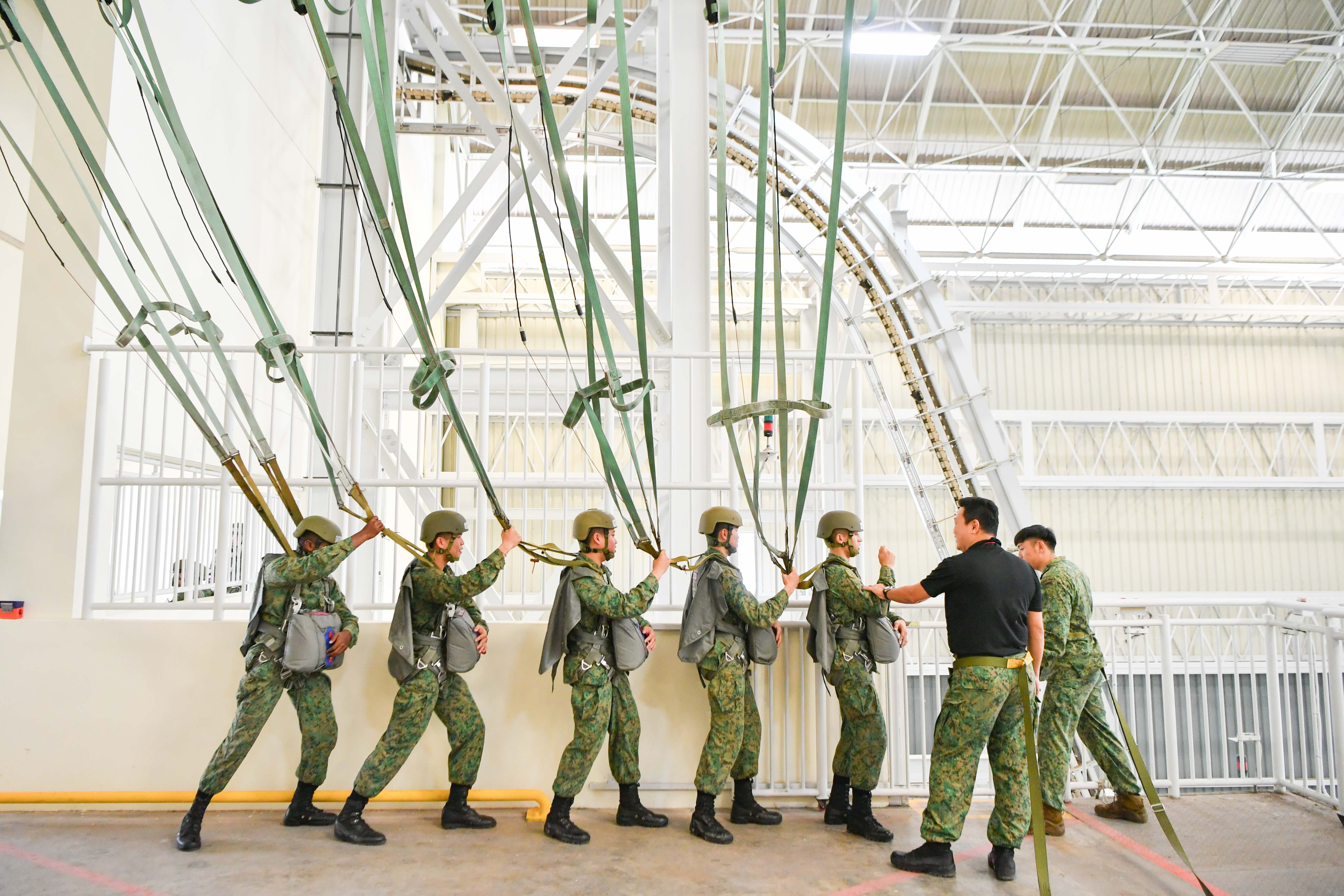
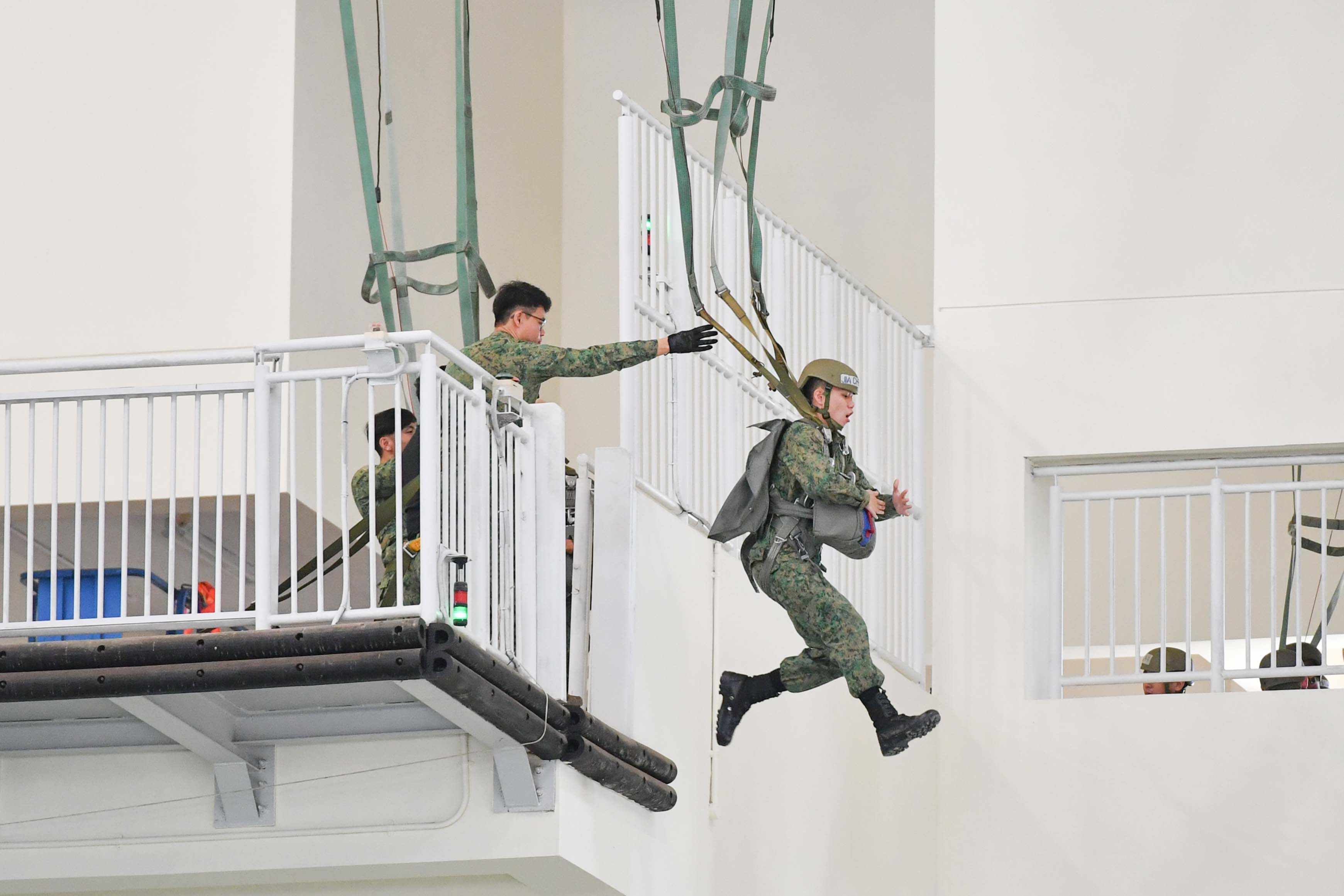
Last stop: Airborne Trainer System (ATS)
Resembling an upside-down monorail, the ATS provides a realistic experience – from jumping out of the aircraft to landing. This is one of the final assessments a trainee must undertake as part of his or her ground training.
It comprises jumping from a 11.2m height, executing their flight drills mid-air and then nailing their landing procedures.

CPT (Dr) Anthony Lim Jun Hong, 26, is the battalion medical officer of 1st Commando Battalion. He is also a search-and-rescue medical officer for the Republic of Singapore Air Force (RSAF), retrieving people in distress out at sea.
“I am activated about two or three times a month. In an activation earlier this month (in December), I flew out to retrieve a patient while winching 25m down from a helicopter,” said the 26-year-old NSF.
Even for an experienced search-and-rescue medical officer like him, the ATS jump is still a new and heart-pumping experience.
“The tower jump is the highest yet. The moment when you have to force yourself to punch out (jump out) was the most challenging for me.”
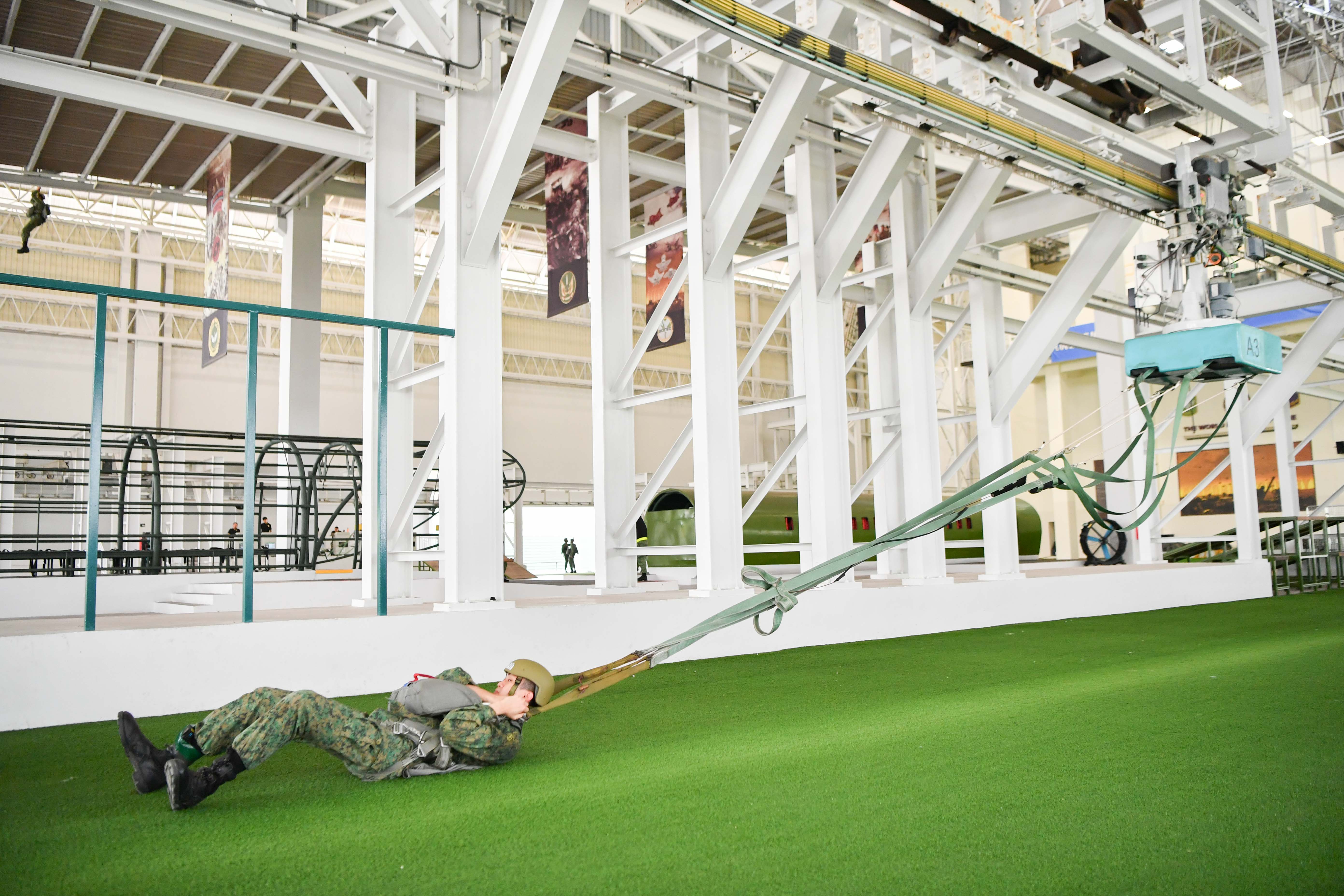
The Airborne Trainer System also includes the ability to simulate different emergency scenarios such as collision or parachute malfunctions, and dragging a trainee upon his landing.
These are unlikely scenarios in a live descent, but trainees must be prepared and learn to adapt and react correctly on the spot.
In addition to learning how to land on grass and tarmac, trainees must be quick in retrieving their parachute immediately after landing safely, to continue with their mission.
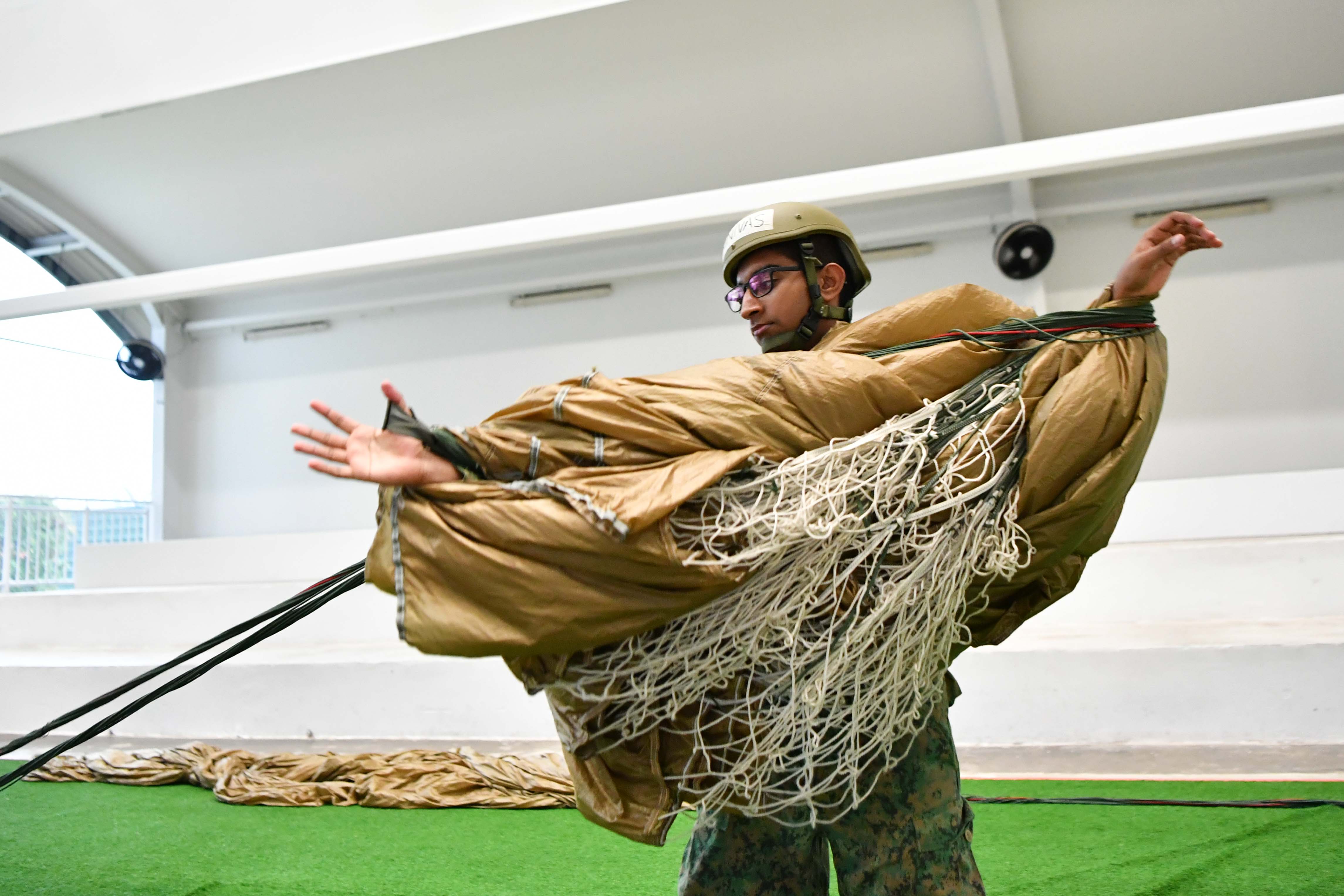
Realistic replicas
The Parachute Training Facility also houses aircraft mock-ups of the C-130 Hercules plane and the CH-47F heavy lift helicopter.
Modelled after the interior dimensions and layouts of the actual aircraft, these replicas allow soldiers to familiarise themselves with the aircraft before undergoing a live parachute descent.
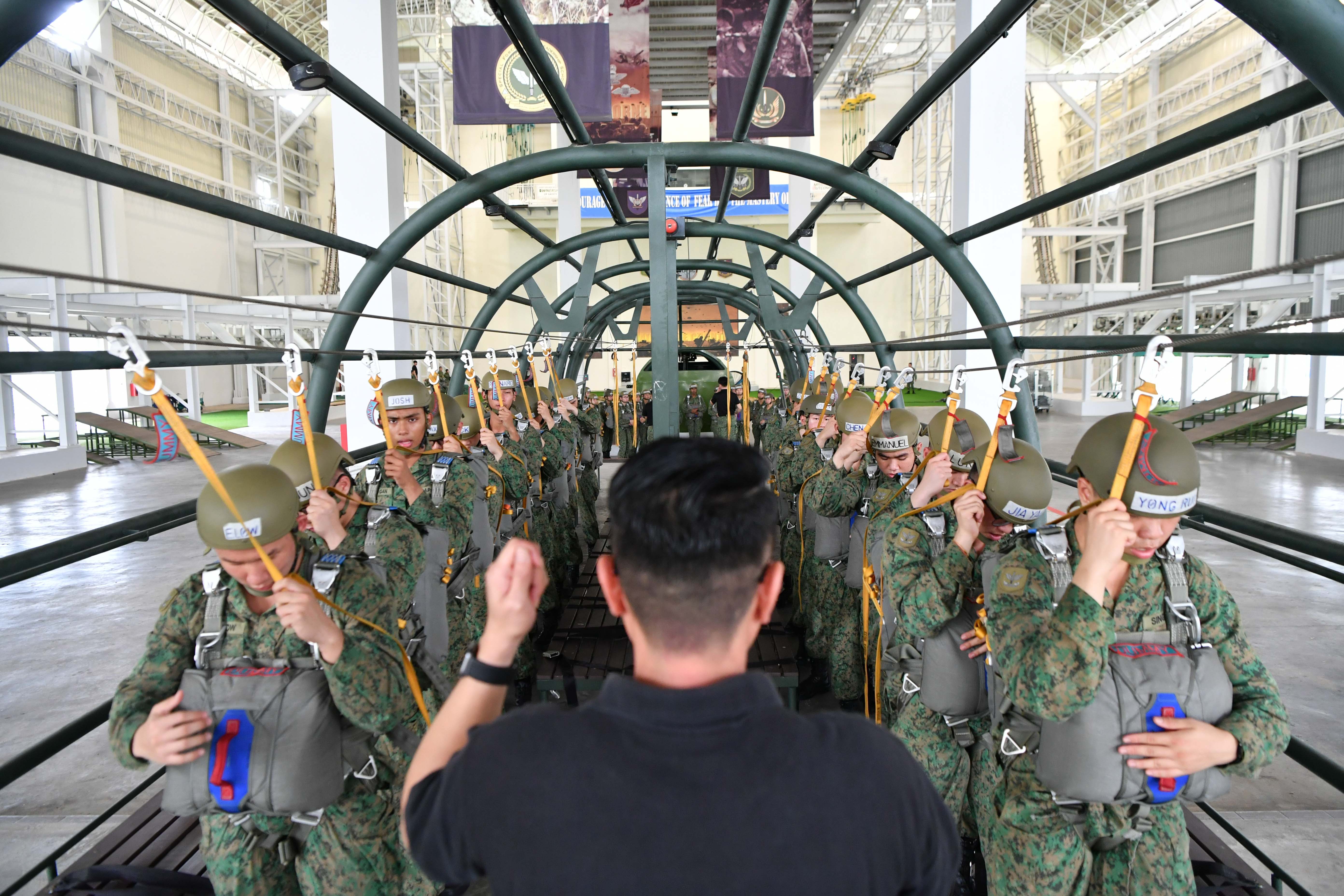
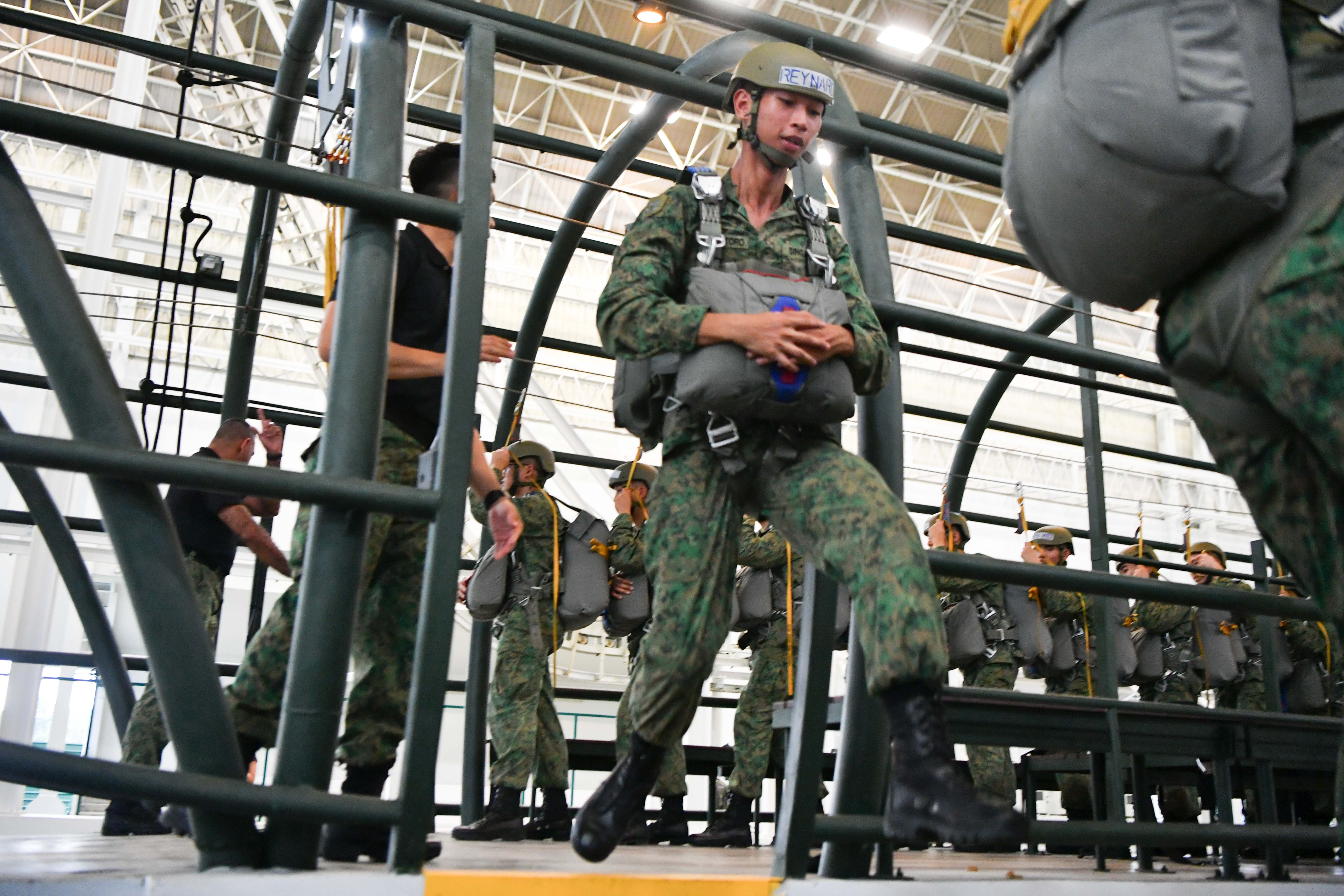
Courage is not the absence of fear
When asked about the instructor that has made a lasting impact on him, PTE Reynard said: “Encik Kuldheep, my instructor. On the first day of BAC, he said that he was going to be very strict and give (us) tough love."
“At first I thought it was overboard, but I realised that he does this so that we remember everything we were taught.”
Words of advice for future BAC trainees? CPT (Dr) Lim replied: “Trust yourself and trust your training."
“Recognise that fear is there and feel the fear, but also have a clear picture of what you are going to do at every point in time.”
Watch BAC instructors 2WO Kuldheep Singh and 3WO Shaun (re)write the Gen Z script:

Take Luke the Red Lion home this Xmas!
1. Comment on our FB or IG post with your answers:
a) The Parachuting Training Facility consists of the Landing Trainer System, _____ Trainer System, and Airborne Trainer System. (Hint: Answer is in the story!)
b) You only have 2 parachutes and have to jump out of a plane -- tag who you're giving them to!
2. Follow us on Facebook, Instagram and Telegram
Four winners will be selected randomly from FB and IG. Contest ends 27 Dec 2024, 2359h.
Terms and conditions:
1. This contest is open only to Singapore Citizens and Permanent Residents.
2. Winners will be notified by direct message (DM) on FB or IG. In the event that confirmation is not received from the winner within 48 hours, a new winner will be selected in their place.
3. Staff of MINDEF Communications Organisation, So Drama! Entertainment, and their family members are not allowed to take part in the contest.
4. Only entries submitted by the stipulated closing date will be considered for the contest. To qualify, participants must not have won a prize of any kind from PIONEER in the last 30 days.
5. Physical prizes must be picked up during business hours at office location as stated in winning notification email. Prizes will not be mailed. Prizes left unclaimed after the stipulated period will be forfeited.
6. All winners chosen will be at PIONEER’s discretion and all decisions are final. PIONEER reserves the right to substitute prizes of equal value or end the contest at an earlier date. PIONEER cannot be held responsible for unforeseen cancellations or delays.
ALSO READ IN OPS & TRAINING
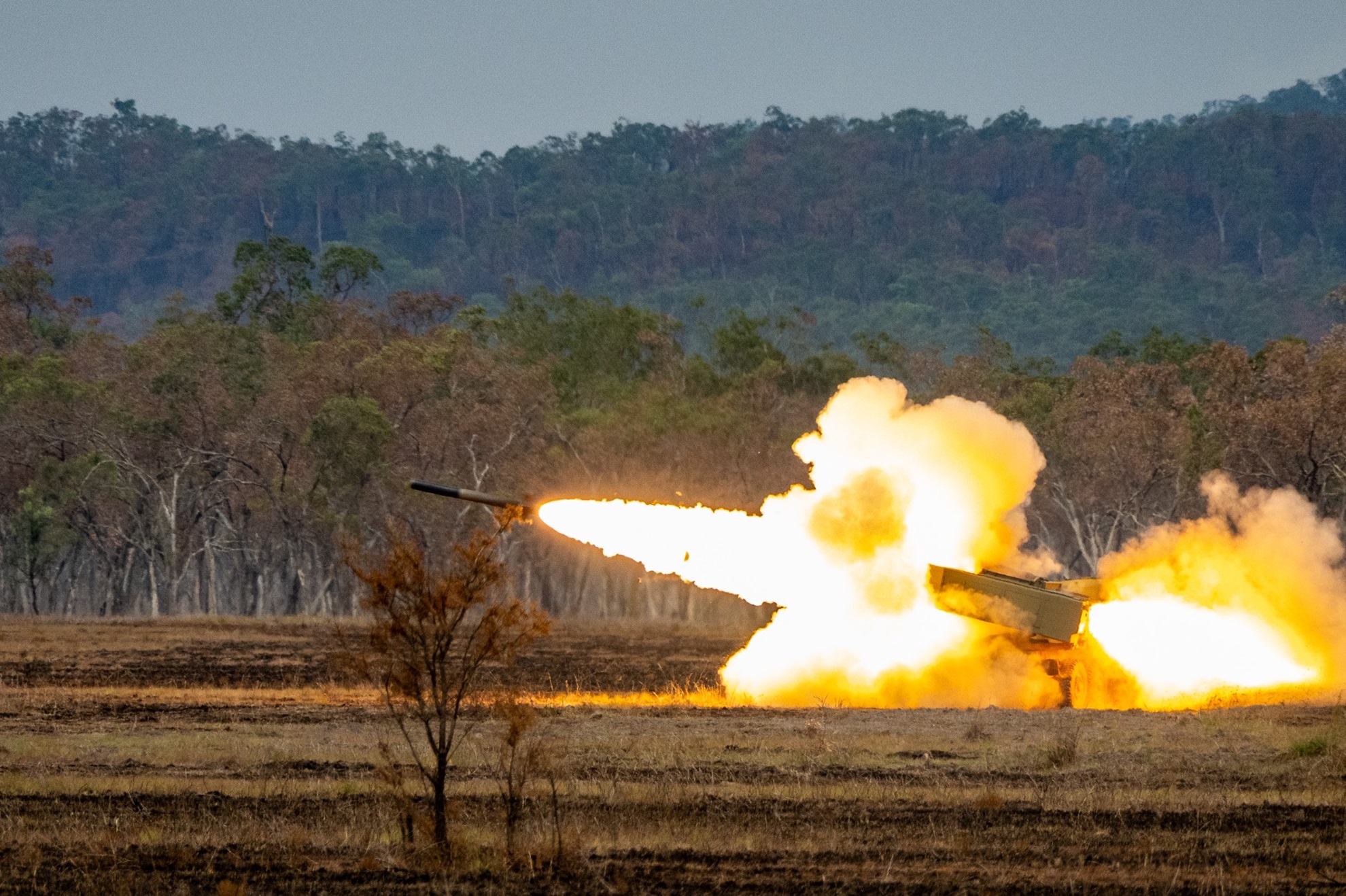
Exercise Wallaby 2025: To see better, shoot faster
31 Oct 2025
The SAF focuses on complex strike missions and multi-domain integration in Exercise Wallaby 2025, the 35th edition of its largest unilateral overseas exercise.
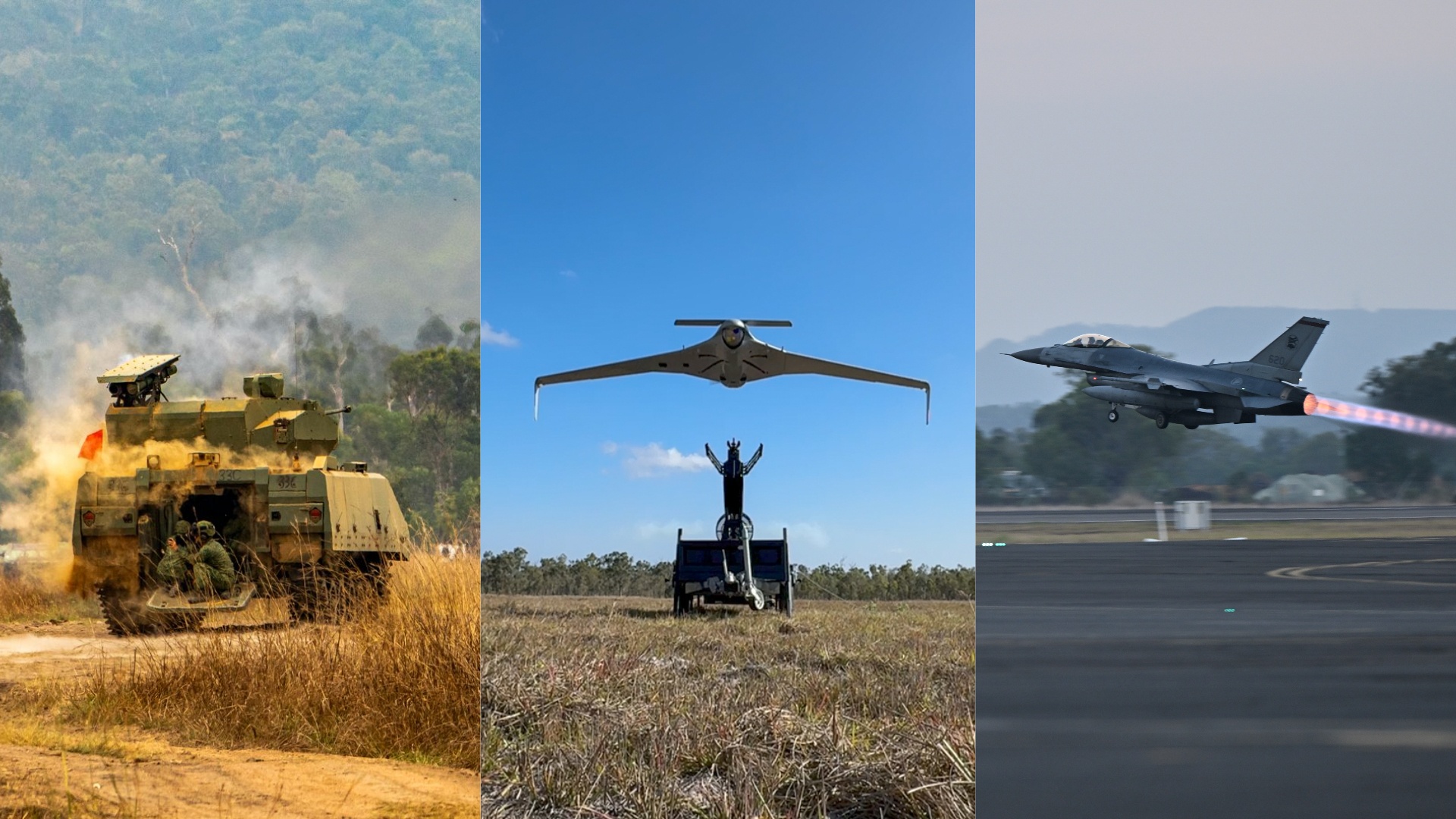
Ex Wallaby 25 – Greater Integration and Complexity
25 Oct 2025
The 35th edition of the SAF’s largest unilateral overseas exercise is an opportunity for expanded scale and deeper integration towards an effective, networked fighting force.

Ex Forging Sabre ramps up use of unmanned assets in integrated strike operations
12 Sep 2025
In this 10th edition of Exercise Forging Sabre, the SAF sharpened its cutting edge for the dynamic modern battlefield, with expanded integration between manned and unmanned platforms.

